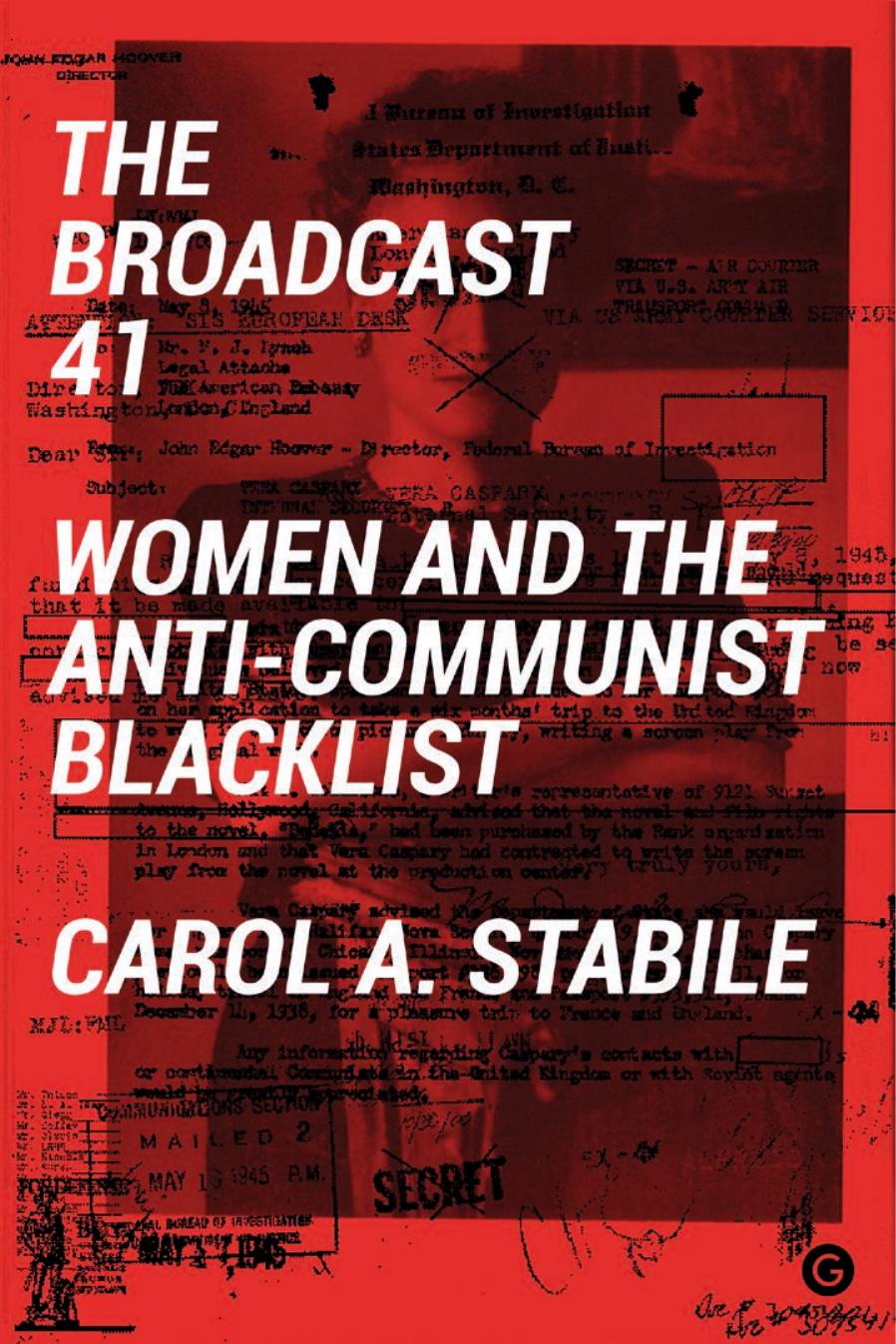The Broadcast 41: Women and the Anti-Communist Blacklist by Carol A Stabile

Author:Carol A Stabile
Language: eng
Format: epub, pdf
Tags: History, Women, Social Science, Media Studies
Publisher: MIT Press
Published: 2018-10-16T00:00:00+00:00
Real Americans like their country. They are proud of it. They think it is a good place to live.… There are those who would chip away our confidence so that their special brand of tyranny might creep into America. They must not succeed.
Sigurd S. Larmon (Chairman, Young & Rubicam)68
Behind the scenes, the television industry was confused and panicked about how to respond to the first cases of blacklisting. Many disliked the blacklist; some as we have seen because it was costing them money, others because it was ethically and legally unjust. But to oppose the blacklist was surely to get caught in its web. As television producer Bob Bendick candidly put it, “Management’s line was, if you’re in Red Channels, you’re a communist. It was a terrible wrong, and I suppose I considered saying, ‘If he goes I go,’ but I was not that dedicated to valor.”69 Harvey Matusow (communist turned anti-communist turned anti-anti-communist) was blunter in his assessment: “Madison Avenue people are cowardly.”70
Advertisers like Liggett & Myers and agencies like Young & Rubicam broadly shared anti-communist beliefs, but they did not want to lose talented and lucrative writers, producers, and actors. According to a CBS executive, networks were concerned that Red Channels would wind up costing “the industry fifty, maybe a hundred million dollars and God knows how many ulcers and gray hairs and broken hearts and shattered careers and suicides. Plus, a lot of public respect—and good shows.”71 In the early days of the blacklist, they had additional concerns about its impact on creativity in the industry: “The trouble with people who’ve never joined anything and therefore are ‘safe’ for us to use,” this executive added, “is that they usually aren’t very good writers or actors or producers or, hell, human beings.”72
Despite the forces arrayed against them, industry opposition to the blacklist seemed both possible and imminent in early fall 1950. As cultural historian Cynthia B. Meyers points out, sponsors and advertising agencies in New York City “were for the most part corporate liberals” who were by no means unified in how to respond to anti-communist charges of subversion.73 There were powerful instances of resistance. Network ABC, for example, defended Gypsy Rose Lee (Figure 5.3) throughout the summer and fall of 1950, maintaining that Lee had demonstrated her loyalty by signing both a loyalty oath and “an affidavit denying any Red ties.”74 Facing down the American Legion’s threats of consumer boycotts, ABC president Robert E. Kintner demanded that the American Legion provide evidence to prove their allegations or cease their otherwise libelous accusations against Lee. Edward Clamage, chairman of the Illinois American Legion’s anti-subversive commission, quickly backed down. Clamage “had based his statements on the inclusion of Miss Lee’s name in ‘Red Channels,’” he told the press, adding that the “entire matter could be easily clarified and the answer should come from the publishers of ‘Red Channels.’” The American Business Consultants responded by saying that they were merely reporting “facts … based on public documents.” Once again, anti-communists dodged accountability by blaming their sources for lies they continued to promote as truth.
Download
The Broadcast 41: Women and the Anti-Communist Blacklist by Carol A Stabile.pdf
This site does not store any files on its server. We only index and link to content provided by other sites. Please contact the content providers to delete copyright contents if any and email us, we'll remove relevant links or contents immediately.
| Civilization & Culture | Expeditions & Discoveries |
| Jewish | Maritime History & Piracy |
| Religious | Slavery & Emancipation |
| Women in History |
Cecilia; Or, Memoirs of an Heiress — Volume 1 by Fanny Burney(32440)
Cecilia; Or, Memoirs of an Heiress — Volume 2 by Fanny Burney(31875)
Cecilia; Or, Memoirs of an Heiress — Volume 3 by Fanny Burney(31858)
The Secret History by Donna Tartt(18859)
Sapiens: A Brief History of Humankind by Yuval Noah Harari(14257)
Leonardo da Vinci by Walter Isaacson(13189)
The Radium Girls by Kate Moore(11930)
Sapiens by Yuval Noah Harari(5295)
How Democracies Die by Steven Levitsky & Daniel Ziblatt(5133)
The Wind in My Hair by Masih Alinejad(5034)
Homo Deus: A Brief History of Tomorrow by Yuval Noah Harari(4827)
Endurance: Shackleton's Incredible Voyage by Alfred Lansing(4683)
The Silk Roads by Peter Frankopan(4460)
Man's Search for Meaning by Viktor Frankl(4435)
Millionaire: The Philanderer, Gambler, and Duelist Who Invented Modern Finance by Janet Gleeson(4386)
The Rape of Nanking by Iris Chang(4140)
Joan of Arc by Mary Gordon(4022)
The Motorcycle Diaries by Ernesto Che Guevara(4018)
Hitler in Los Angeles by Steven J. Ross(3902)
